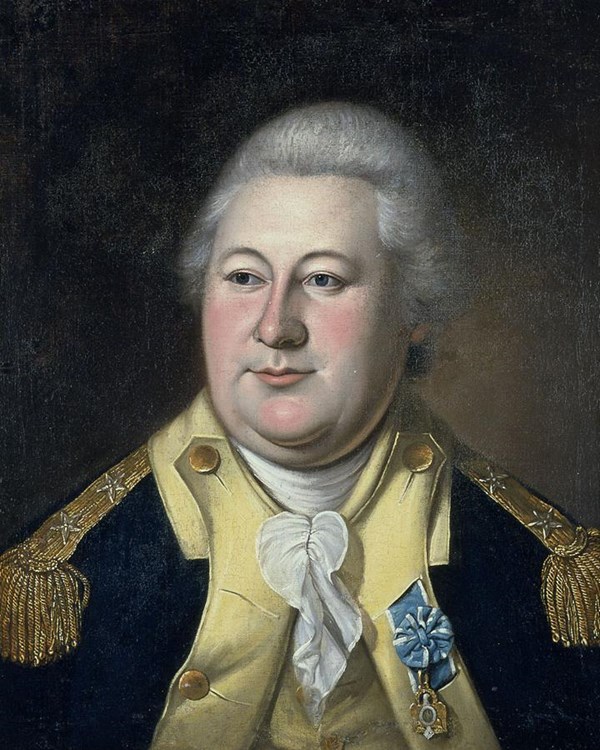Last updated: February 20, 2025
Person
Henry Knox

Independence NHP Museum Collection (INDE 14081)
Henry Knox, a young Boston bookseller, emerged as a pivotal figure in the American Revolutionary War. Knox became known for his expertise in military science and his significant contributions to the war effort. Despite the early loss of his father, Knox rose to prominence through self-education and a deep passion for military affairs.
Knox was a commanding presence, standing over six feet tall and weighing nearly three hundred pounds. His interest in military science was evident from an early age, and he was actively involved in key events in Boston leading up to and during the Revolutionary War, such as the Boston Tea Party and the Battle of Bunker Hill.
During the war, Knox's talents caught the attention of General George Washington. His skill in designing forts at Roxbury during the Siege of Boston was a crucial factor in his becoming a trusted ally of Washington. In the winter of 1775-76, Washington charged Knox with the complex and crucial task of transporting artillery pieces from Fort Ticonderoga, at the southern end of Lake Champlain in New York, to the siege lines around Boston. Knox’s team collected 59 iron and brass cannon, mortars, and howitzers (along with boxes of lead and a barrel of musket flints) – approximately 60 tons of artillery – and successfully transported them using sleds over the frozen ground and river through the Hudson River valley and across Massachusetts. This artillery enabled the fortification of Dorchester Heights on March 4, 1776.
Knox played essential roles in other critical moments of the war, including the crossing of the Delaware River on Christmas night 1776 and the ensuing attack on the Hessians in Trenton, New Jersey. His strategic acumen was instrumental in the American victory at the Battle of Yorktown, which led to the British surrender.
In addition to his battlefield achievements, Knox made significant contributions to the young nation in various capacities. He founded the nation's first arsenal in Springfield, Massachusetts in 1777, and later proposed the establishment of a permanent military academy at West Point, which was realized in 1802. He also played a key role in forming the Society of Cincinnati in 1783, an organization led by officers of the Continental Army who served together in the American Revolution to commemorate the creation of the United States.
Knox's relationship with George Washington was marked by mutual respect and collaboration. He served as the first Secretary of War under Washington's presidency, where he was instrumental in laying the groundwork for the United States' defense system, including establishing the first navy and overseeing the construction of major naval warships.
On a personal note, Knox's life was marked by both success and tragedy. He and his wife, Lucy, had eleven children, but tragically, eight of them died at a young age. Knox himself passed away unexpectedly in 1806 at the age of 56.
Sources
Bell, John. “George Washington’s Headquarters and Home.” Cambridge, MA: Longfellow House-Washington’s Headquarters, Department of the Interior, National Park Service, February 29, 2012.
Mosher, John. Henry Knox: Visionary General of the American Revolution. History: Reviews of New Books. 2009. 37:2, 73-74.
